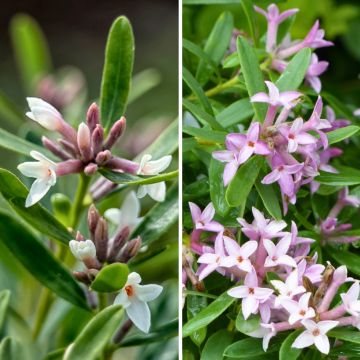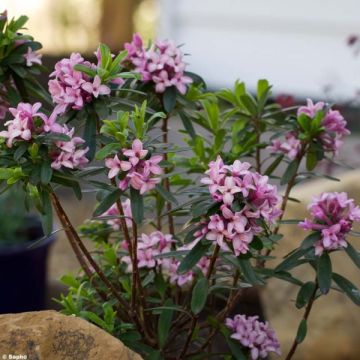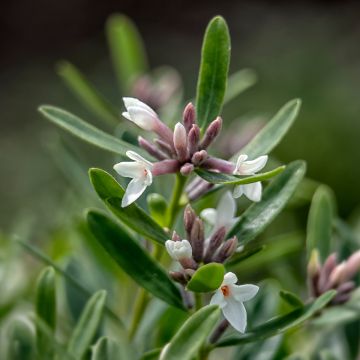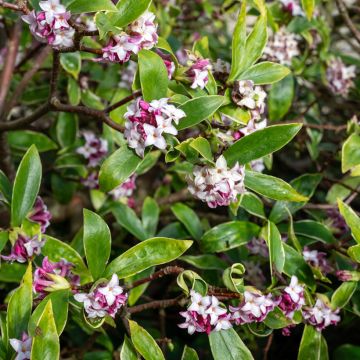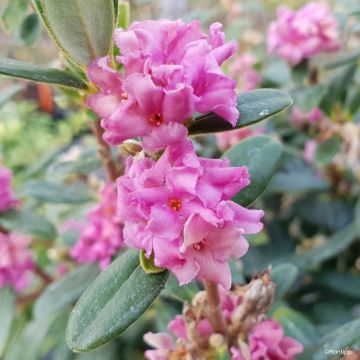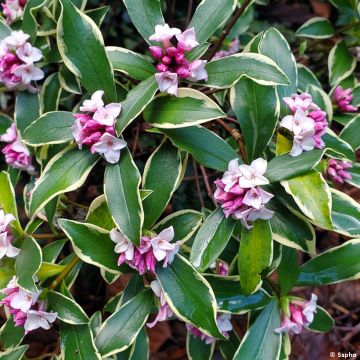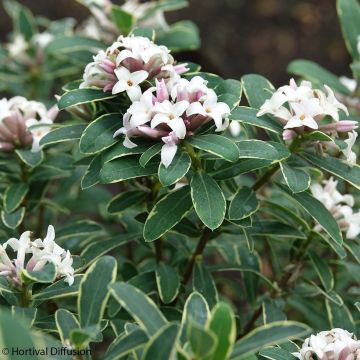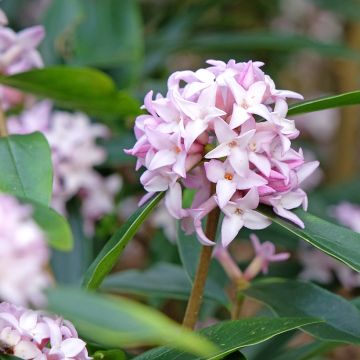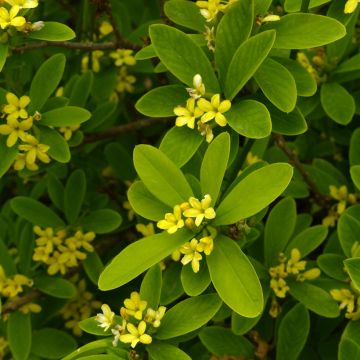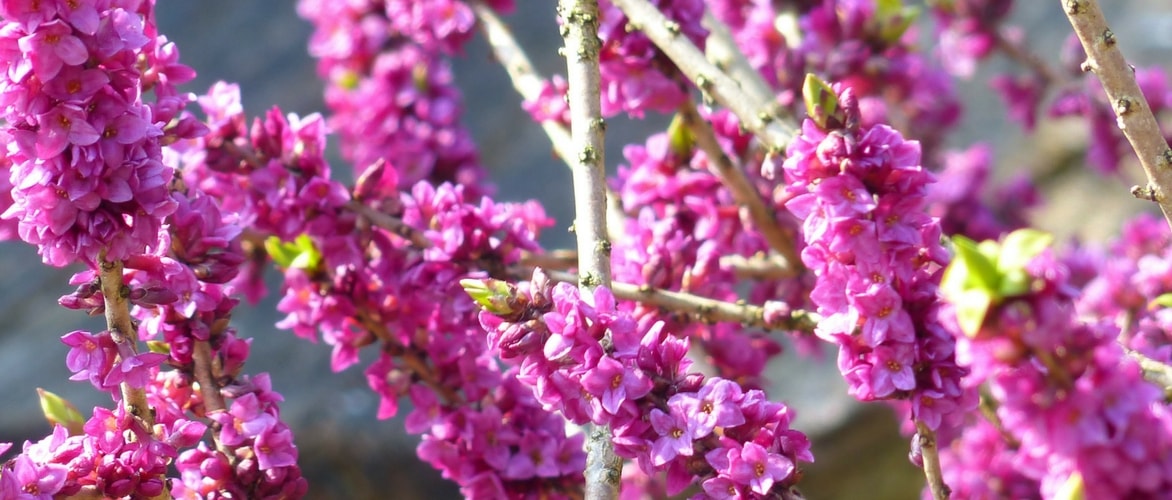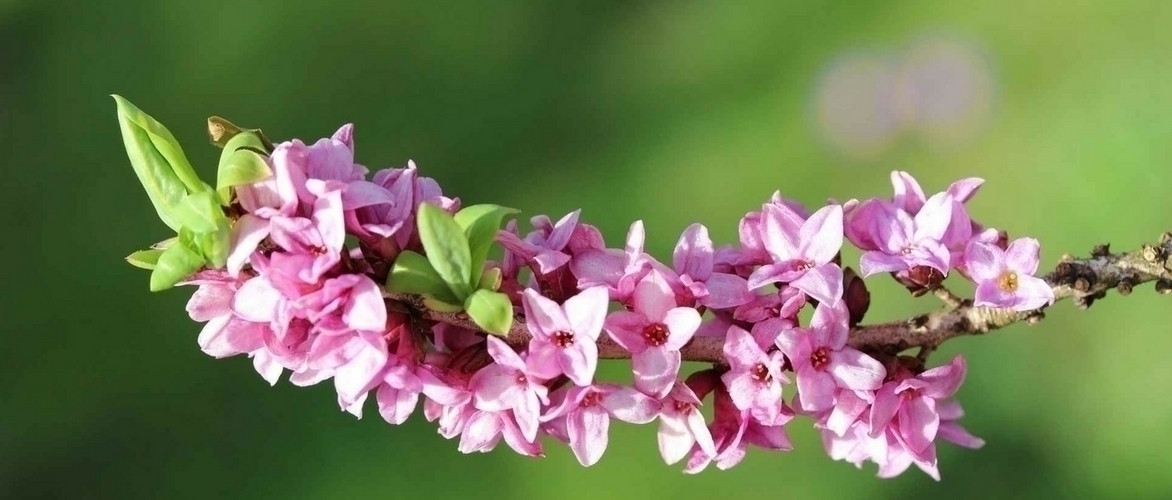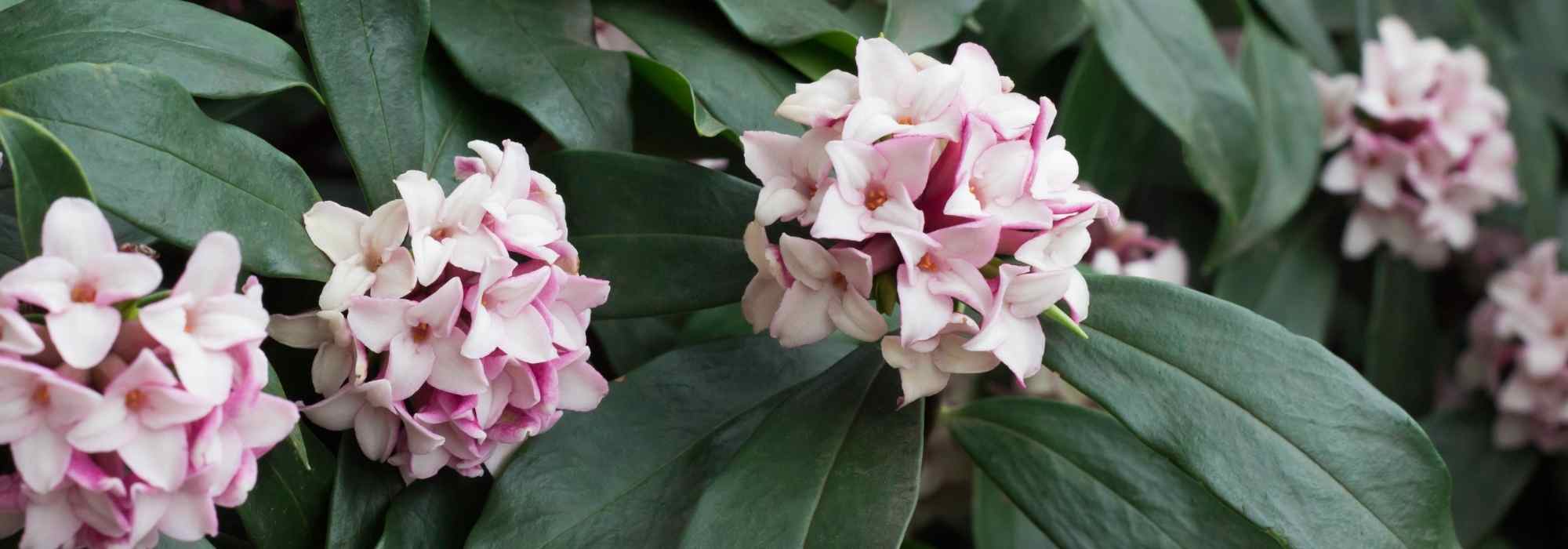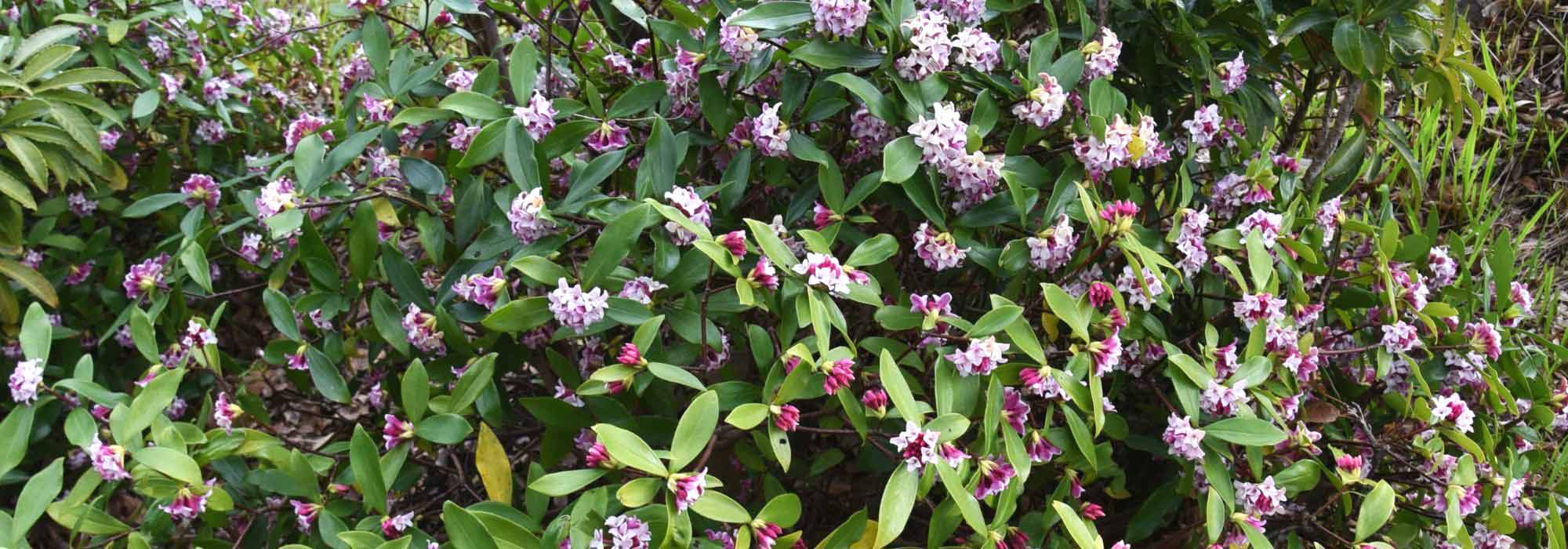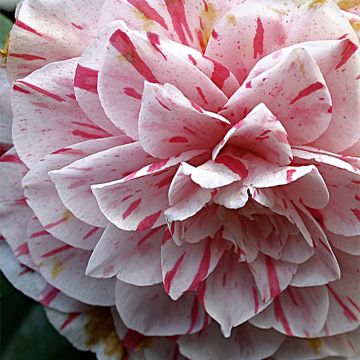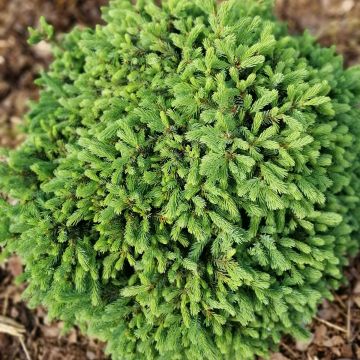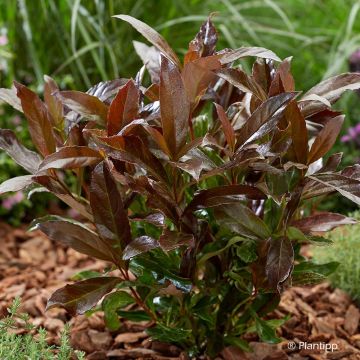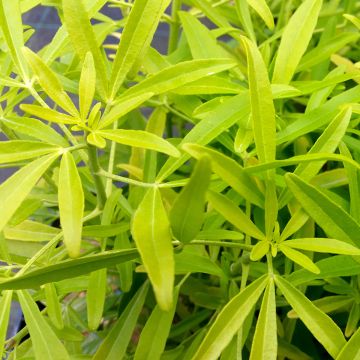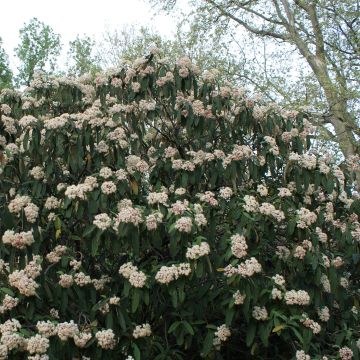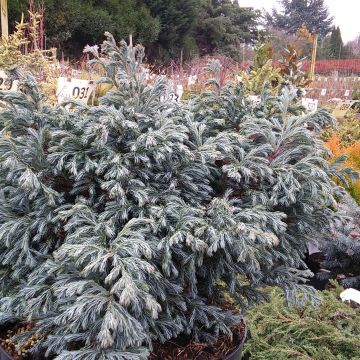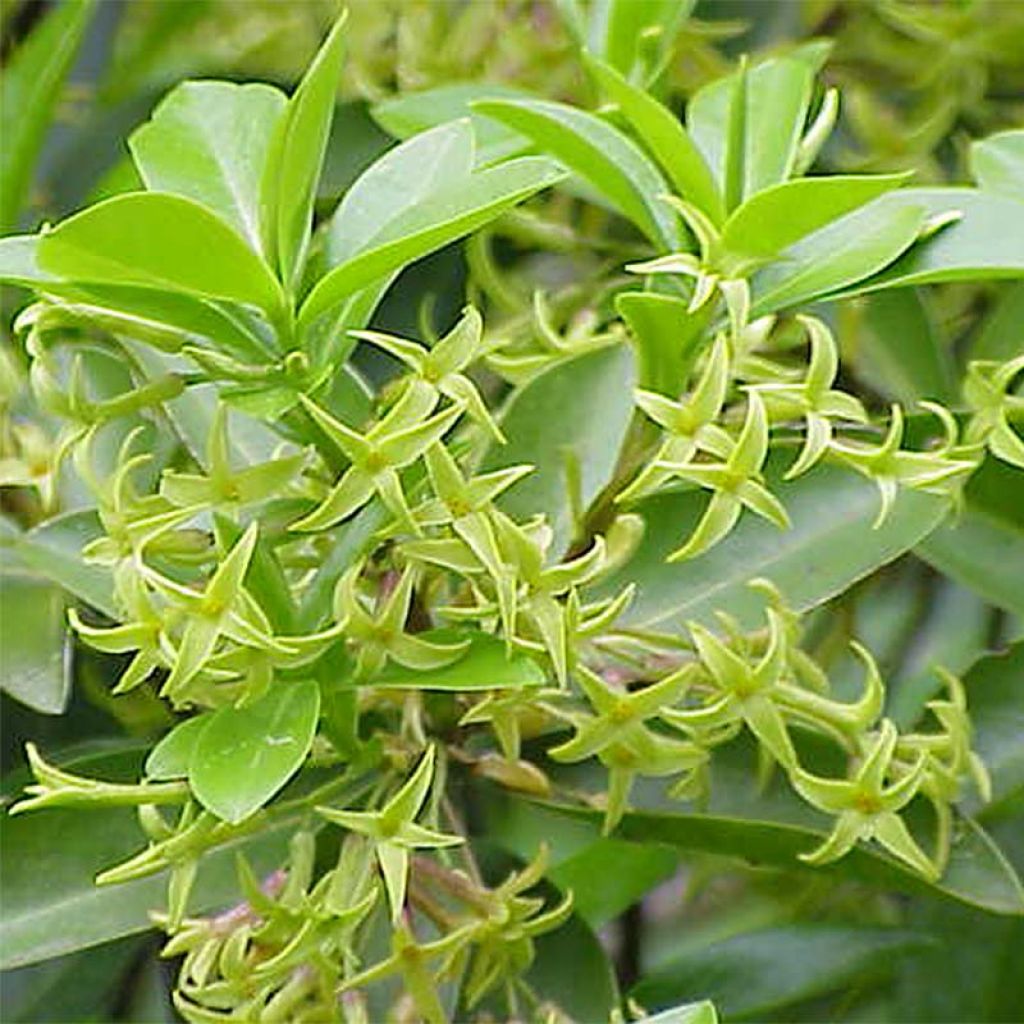

Daphne laureola Philippi - Daphné de Philippe.
Daphne laureola subsp. philippi
Daphne laureola subsp. philippi subsp. philippi
Spurge-laurel, Copse-laurel
Special offer!
Receive a €20 voucher for any order over €90 (excluding delivery costs, credit notes, and plastic-free options)!
1- Add your favorite plants to your cart.
2- Once you have reached €90, confirm your order (you can even choose the delivery date!).
3- As soon as your order is shipped, you will receive an email containing your voucher code, valid for 3 months (90 days).
Your voucher is unique and can only be used once, for any order with a minimum value of €20, excluding delivery costs.
Can be combined with other current offers, non-divisible and non-refundable.
Why not try an alternative variety in stock?
View all →This plant carries a 24 months recovery warranty
More information
We guarantee the quality of our plants for a full growing cycle, and will replace at our expense any plant that fails to recover under normal climatic and planting conditions.
Would this plant suit my garden?
Set up your Plantfit profile →
Description
The Daphne laureola Philippi is a compact form of a small Pyrenean shrub also known as daphne laureola or spurge laurel, preferring the dappled light of limestone undergrowth and tolerating summer drought very well. This daphne seduces with its long, fragrant flowering that begins in February and only ends with the arrival of heat. Its small, waxy, star-shaped flowers in a slightly greenish yellow colour, clustered in small clusters, adorn a very ornamental foliage, shiny, wide and fleshy, arranged in a circular manner all around the stems. This unusual variety, resembling euphorbia, brings a little luxuriance to shaded and dry areas of the garden, often neglected by other plants.
The Daphne laureola Philippi belongs to the family of Thymelaeaceae. It is native to southern Europe and North Africa. In nature, this shrub grows on limestone soils, in undergrowth, but also in clearings and on shaded rocky slopes during the hottest hours of the day. Its hardiness exceeds -15°C (5 °F).
In its Philippi form, this shrub will not exceed an average of 60cm (23.6 in), with a spread of 40cm (15.7 in), and its growth is slow. It has an upright habit, supported by quite vertical, sometimes twisting, flexible, quite thick, grey coloured stems. The evergreen foliage is arranged in a rosette, mostly in the upper part of the branches. It consists of entire, oblong leaves, 4 to 6 cm (1.6 to 2.4 in) long and 3 to 4 cm (1.2 to 1.6 in) wide. The lamina, leathery and thick, shows a dark bluish green colour with steel reflections, very shiny on top, lighter underneath.
The flowering takes place from February to May. The flower heads are gathered in small clusters in the axil of the leaves. They consist of small tubular flowers with 4 lobes, an acidic yellow colour tinged with green. Their strong and pleasant scent is reminiscent of honey. They are followed by the formation of oval berries that turn black when ripe.
Whether in the ground or in a container, place the Daphne laureola Philippi near a pathway or close to the house, to enjoy its intoxicating fragrance every time you pass by it from the end of winter. It requires very little maintenance and only needs well-drained soil and exposure to dappled sunlight, or even shade in hot and dry climates, to flourish. You can accompany it with similar-looking euphorbias, botanical peonies (Paeonia mascula), perennials or shrubs that thrive in the same growing conditions such as Abelia 'Confetti', Sarcococca humilis, Nandina domestica or Mexican orange Choysia ternata.
Note: Daphnes can be high-maintenance and difficult to cultivate. They are best suited for experienced gardeners.
Daphne laureola subsp. philippi in pictures
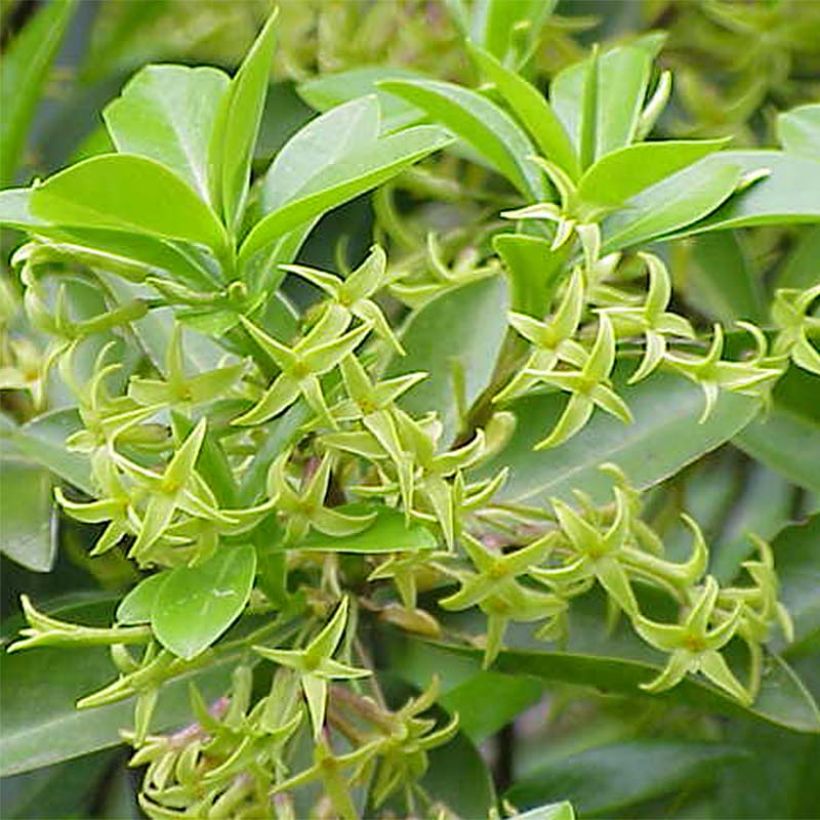

Plant habit
Flowering
Foliage
Safety measures
Botanical data
Daphne
laureola subsp. philippi
subsp. philippi
Thymelaeaceae
Spurge-laurel, Copse-laurel
Pyrenees
ingestion
Cette plante est toxique si elle est ingérée volontairement ou involontairement.
Ne la plantez pas là où de jeunes enfants peuvent évoluer, et lavez-vous les mains après l'avoir manipulée.
Pensez à conserver l'étiquette de la plante, à la photographier ou à noter son nom, afin de faciliter le travail des professionnels de santé.
Davantage d'informations sur https://plantes-risque.info
Other Daphne
View all →Planting and care
The Daphne laureola Philippi appreciates semi-shaded exposure, in the morning sun or under the cover of trees whose shade will not be too dense. Cultivate it in a perfectly drained, rather dry, chalky, light, even sandy soil. It is hardy up to about -20°C (-4 °F), in well-drained soil and in a sheltered position. Apply compost on the surface every 2 years in spring. Daphne do not require pruning. Wear gloves when handling it as the sap that comes out of it is irritating to the skin. It can be affected by fungus so treat the daphne with a preventative fungicide in spring.
Planting period
Intended location
Care
Planting & care advice
This item has not been reviewed yet - be the first to leave a review about it.
Similar products
Haven't found what you were looking for?
Hardiness is the lowest winter temperature a plant can endure without suffering serious damage or even dying. However, hardiness is affected by location (a sheltered area, such as a patio), protection (winter cover) and soil type (hardiness is improved by well-drained soil).

Photo Sharing Terms & Conditions
In order to encourage gardeners to interact and share their experiences, Promesse de fleurs offers various media enabling content to be uploaded onto its Site - in particular via the ‘Photo sharing’ module.
The User agrees to refrain from:
- Posting any content that is illegal, prejudicial, insulting, racist, inciteful to hatred, revisionist, contrary to public decency, that infringes on privacy or on the privacy rights of third parties, in particular the publicity rights of persons and goods, intellectual property rights, or the right to privacy.
- Submitting content on behalf of a third party;
- Impersonate the identity of a third party and/or publish any personal information about a third party;
In general, the User undertakes to refrain from any unethical behaviour.
All Content (in particular text, comments, files, images, photos, videos, creative works, etc.), which may be subject to property or intellectual property rights, image or other private rights, shall remain the property of the User, subject to the limited rights granted by the terms of the licence granted by Promesse de fleurs as stated below. Users are at liberty to publish or not to publish such Content on the Site, notably via the ‘Photo Sharing’ facility, and accept that this Content shall be made public and freely accessible, notably on the Internet.
Users further acknowledge, undertake to have ,and guarantee that they hold all necessary rights and permissions to publish such material on the Site, in particular with regard to the legislation in force pertaining to any privacy, property, intellectual property, image, or contractual rights, or rights of any other nature. By publishing such Content on the Site, Users acknowledge accepting full liability as publishers of the Content within the meaning of the law, and grant Promesse de fleurs, free of charge, an inclusive, worldwide licence for the said Content for the entire duration of its publication, including all reproduction, representation, up/downloading, displaying, performing, transmission, and storage rights.
Users also grant permission for their name to be linked to the Content and accept that this link may not always be made available.
By engaging in posting material, Users consent to their Content becoming automatically accessible on the Internet, in particular on other sites and/or blogs and/or web pages of the Promesse de fleurs site, including in particular social pages and the Promesse de fleurs catalogue.
Users may secure the removal of entrusted content free of charge by issuing a simple request via our contact form.
The flowering period indicated on our website applies to countries and regions located in USDA zone 8 (France, the United Kingdom, Ireland, the Netherlands, etc.)
It will vary according to where you live:
- In zones 9 to 10 (Italy, Spain, Greece, etc.), flowering will occur about 2 to 4 weeks earlier.
- In zones 6 to 7 (Germany, Poland, Slovenia, and lower mountainous regions), flowering will be delayed by 2 to 3 weeks.
- In zone 5 (Central Europe, Scandinavia), blooming will be delayed by 3 to 5 weeks.
In temperate climates, pruning of spring-flowering shrubs (forsythia, spireas, etc.) should be done just after flowering.
Pruning of summer-flowering shrubs (Indian Lilac, Perovskia, etc.) can be done in winter or spring.
In cold regions as well as with frost-sensitive plants, avoid pruning too early when severe frosts may still occur.
The planting period indicated on our website applies to countries and regions located in USDA zone 8 (France, United Kingdom, Ireland, Netherlands).
It will vary according to where you live:
- In Mediterranean zones (Marseille, Madrid, Milan, etc.), autumn and winter are the best planting periods.
- In continental zones (Strasbourg, Munich, Vienna, etc.), delay planting by 2 to 3 weeks in spring and bring it forward by 2 to 4 weeks in autumn.
- In mountainous regions (the Alps, Pyrenees, Carpathians, etc.), it is best to plant in late spring (May-June) or late summer (August-September).
The harvesting period indicated on our website applies to countries and regions in USDA zone 8 (France, England, Ireland, the Netherlands).
In colder areas (Scandinavia, Poland, Austria...) fruit and vegetable harvests are likely to be delayed by 3-4 weeks.
In warmer areas (Italy, Spain, Greece, etc.), harvesting will probably take place earlier, depending on weather conditions.
The sowing periods indicated on our website apply to countries and regions within USDA Zone 8 (France, UK, Ireland, Netherlands).
In colder areas (Scandinavia, Poland, Austria...), delay any outdoor sowing by 3-4 weeks, or sow under glass.
In warmer climes (Italy, Spain, Greece, etc.), bring outdoor sowing forward by a few weeks.






























